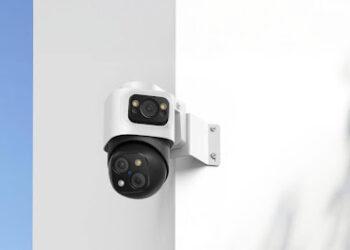Introduction: The Hidden Cost of Inefficiency
Industrial operations today face a dual imperative: meeting rising production demands while curbing both costs and carbon emissions. It may surprise you that the industrial sector accounted for approximately 37% of global energy use in 2022—more than any other end-use category—and that inefficiencies in control systems alone represent up to 30% of untapped energy-saving potential.
“Your motor-driven systems could be leaking energy silently.”
Picture a factory floor where motor-driven systems quietly bleed power during idle cycles, and process temperatures fluctuate without justification. This “silent energy leak” not only inflates utility bills but also accelerates equipment wear.
What if you could retrofit existing installations with next-generation sensors and power electronics to slash energy consumption by nearly half?
Intelligent energy-saving technologies lead to lower costs, reduced carbon footprint, and extended equipment lifespan.
At Chipsgate Controller, we help engineers retrofit legacy systems with intelligent components that unlock measurable savings.
Core Technologies Behind Smart Energy-Saving
Smart energy-saving in industrial control systems is built on three pillars:
Real-Time Condition Monitoring
Key components: High-precision current & vibration sensors
Principle: Detect sub-optimal load conditions and mechanical imbalance in real time.
By deploying sensors on motors, pumps, and compressors, engineers can monitor operating conditions and avoid wasteful idle states. Anomalies such as increased no-load current or excessive vibration can prompt system shutdowns or automatic corrections.
Dynamic Power Optimization
Key components: SiC MOSFETs, IGBT modules
Principle: Minimize switching and conduction losses using wide-bandgap semiconductors.
Silicon carbide (SiC) devices enable high-frequency switching with minimal energy loss. When integrated into variable-frequency drives (VFDs), they allow for precise speed control and power delivery tailored to real-time demand.
Edge-Embedded Intelligence
Key components: Low-power MCUs (e.g., ARM Cortex-M series)
Principle: Run control logic locally to reduce data transfer energy and response latency.
Local microcontrollers eliminate the need for constant cloud communication. They support adaptive control, respond instantly to changes, and reduce the overhead of external computing.
Application Case Studies
Case Study 1: Injection Molding Hydraulic Retrofit
- Problem: Constant-speed hydraulic pumps led to energy waste during low-load cycles
- Solution: Integration of pressure sensors and VFDs sourced via chipsgate
- Results:
- Energy consumption reduced by 45%
- ROI achieved in less than 12 months
- Lower equipment temperature extended seal life by 18%
Case Study 2: Smart HVAC in Commercial Buildings
- Problem: Central thermostats caused overcooling and inconsistent comfort levels
- Solution: Multi-zone sensor network with predictive control algorithms running on edge MCUs
- Results:
- 320,000 kWh of electricity saved annually
- $60,000/year in cost savings
- Payback in 18 months
- Comfort complaints decreased by 75%
Step-by-Step Implementation Guide
- Conduct an Energy Audit
Use clamp-on power meters and vibration analyzers to identify inefficient machines or idle energy draw.
- Upgrade Key Components
- Replace electromechanical relays with solid-state relays (SSRs)
- Adopt SiC-based VFDs and modern feedback encoders
- Redesign Control Logic
- Transition open-loop systems to PID closed-loop using high-stability op-amps (e.g., TI OPA series)
- Introduce sleep modes using ultra-low-power timer ICs for idle periods
- Enable Continuous Monitoring
Use industrial IoT gateways to stream data to a cloud platform. Analyze long-term trends, set performance benchmarks, and implement updates as needed.
Action Checklist for Engineers
Start with systems that consume the most energy: motor-driven equipment, which accounts for 66% of total industrial electricity use.
- Choose power modules with switching frequencies above 100 kHz for better efficiency
- Select sensors with at least ±1% accuracy and industrial-grade EMI protection (e.g., STMicroelectronics IMU)
- Validate control loop stability and schedule firmware updates for adaptive improvements
Start Smart with chipsgate.com
Smart energy-saving isn’t a future promise—it’s a proven path to efficiency and reliability. Whether you’re modernizing a single machine or optimizing a full facility, chipsgate Controller offers the components and technical confidence to help you make it happen.
Want to see how these technologies apply to your facility?
Learn more and explore how smart control starts with smart components.







